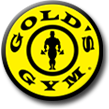Exercise Guidelines for Older Adults
As someone gets older, generally there is a decrease in strength and mobility so that it interferes with daily activities. The strength and ability of the skeletal and cardiac muscles to carry out their responsibilities also decrease.
Sport is the solution to this problem. Exercise for the elderly is much more needed than you have ever thought. However, due to the degeneration of the body's functional abilities and physical capacities, exercise should be performed with caution. We will discuss recommendations so that the elderly can get good benefits from exercise:
Start slowly
Start with the exercises that are easiest for your body to do. This needs to be done to assess your personal physical capacity and apply it to any type of exercise you will be doing. Don't forget to warm up.
Progressive Overload
Make a weekly or monthly strategy to increase the difficulty level of the practice. Gradually increase the duration, reps, sets, or even increase the load.
Stability
Decreased stabilization muscle strength has a higher risk of injury. Work your core before starting any exercise so that you get used to core activation regardless of the workout.
Balance
Increasing age can cause the ability and coordination of the body to maintain balance to be very vulnerable to decrease. Don't forget to work on your balance after your core workout.
Functionally train your muscles
Perform multiplanar movements that are similar to daily activities to keep your body functioning at its best.
Don't forget your heart
Don't forget cardiovascular exercise. Cardiac muscle is a muscle that never rests. Decreased cardiovascular capacity is also prone to occur in old age. The Centers for Disease Control and Prevention (CDC) recommends doing at least 150 minutes of aerobic exercise per week and strength training twice a week. 2 times strength training in 1 week. Do aerobic exercise on an intensity scale of 5/6 out of 10 (moderate or 7/8 (High). 1 minute of high exercise equals 2 minutes of moderate exercise. You can do recreational sports such as brisk walking, cycling, or swimming as part of your aerobic exercise. For strengthening exercises, just do repetitions (8-12 repetitions in 2-3 sets, just do 2 times in 1 week. Train the lower and upper body alternately.
The keyword for the elderly is to stay active. Try to keep moving. One thing the elderly need to avoid at the beginning of the program is explosive exercise. Avoid jumping movements, because these exercises have a high impact on the joints.
Especially for the elderly who have chronic diseases or take regular medications such as DM or hypertension sufferers, you should consult your exercise plan with your personal doctor and Personal Trainer to reduce the risk of unwanted things happening during exercise as low as possible while getting as much benefit as possible.
Happy exercising!
Gold's Gym Mall Ciputra | Gold's Gym Mall of Indonesia | Gold's Gym Thamrin City | Gold's Gym Cilandak Town Square | Gold's Gym Baywalk Mall Pluit | Gold's Gym Kalibata City Mall | Gold's Gym Braga Citywalk | Gold's Gym Cihampelas Walk | Gold's Gym Summarecon Mall Serpong | Gold's Gym Mall @ Alam Sutera | Gold's Gym Bintaro X-change | Gold's Gym The Breeze BSD | Gold's Gym Grand City Surabaya | Gold's Gym Surabaya Town Square | Gold's Gym Grand Metropolitan Bekasi





